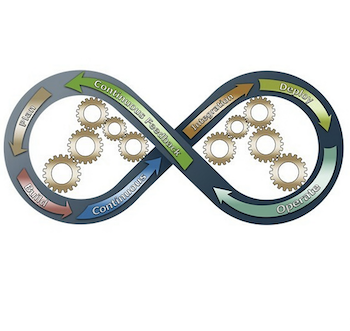
The Agile-Policymaking Frontier

Just the sound of “making government more agile” summons pleasing images to the civic mind: resilient response to changing conditions; innovation and ingenuity; immediacy in problem-solving; citizen-centered service; bureaucracy getting out of the way; experimentation leading to progress.
These ideas center upon government’s role as implementer. That role presumes both existing authority and relatively stable consensus politically. And that’s no fantasy, really: the magnetic appeal of agile government stems from near-universal political agreement that government can and should do better, however we may task it.
By comparison, “agile policymaking” as a vehicle for better government understandably sounds more obtuse. Representative democracy involves debate, disagreement and, with any luck at all, compromise and movement forward. The floor of the legislature in its natural state – noisy, polemic, untamed - doesn’t quite mesh with “agile” in any meaningful sense. Indeed, if raucous legislative processes could only become more productive – or perhaps just more orderly and predictable – we would delight in that progress. Yet such minimal improvement would seem to fall well short of anything we’d wish to describe as agile.
Nonetheless, bringing agile vision and principles to policymaking should draw our attention, if only as a provocative heuristic. And the time couldn’t be riper for introspection and questioning of standing practice. Who says there’s nothing new under the sun? Perhaps there is little that’s inevitable in the way modern policymaking gets done. With the persistence of incivility and outright paralysis in too many legislative settings, we ought to be restless. We ought to insist on higher function. Whatever it may come to be, needless to say, agile policymaking will be anything but “politics as usual.”
A number of ambitions fall gently into place. Like the practice of traditional policy analysis (“TPA”)[1] that helps guide lawmakers’ judgment, agile policymaking would aim to be more objective, and evidenced-based, than politics usually is. Like TPA, agile policymaking might couple i) applied social inquiry and leadership insight with ii) a desire to distinguish among more and less preferable proposals for collective action. And like TPA, agile policymaking would be undertaken by dedicated teams of hard-thinkers, rigorously pursuing problem-solving in the public interest.
Unlike TPA, however, agile policymaking ought to reorient conventional lawmaking and governance. Among the areas of potential ferment:
- Flow. Typical legislative processes are rather episodic. Issues once lacking momentum suddenly rise to marquee-level primacy. Selective agendas take shape, consistent with tactical priorities set by parties and coalitions. Agile policymaking should instead envision continuous timelines over cycles of evaluation and improvement, based upon stable social initiatives.
- Quality. Electoral mandates rule the day but famously lack precision. Under the status quo, long periods of relative inattention to given issues are punctuated by omnibus legislative packages addressing slews of public questions all at once. Agile policymaking should instead smooth and supplement these processes with more regular, incremental adjustments, scaled trials and pilot programs.
- Connectivity. Conventional legislative practice creates agencies, delegates power and resources, and monitors policy work with a measure of comfortable, bureaucratic distance. Agile policymaking should instead incorporate nimble and collaborative oversight, where implementation-partnerships prevail and policymakers remain both engaged and directive.
- Enthusiasm. Too often in contentious settings, lawmaking consensus is unstable and short-lived. Coalitions demand that novel approaches – no matter how exciting - be constrained with sunset provisions and short-leash appropriations. Agile policymaking should instead orient toward optimism and sustainability, embedding outcomes-informed incentives for success-based program extension.[2]
- Ownership. While public-facing hearings and broadcast proceedings symbolically invite voters and taxpayers into chambers, such participation is abstract and diffuse. Constituents can contact their representatives to solve problems, but rarely is there any meaningful connection between constituent service and eventual lawmaking. Agile policymaking should directly engage stakeholders and “users,” making its outputs better informed and more responsive.
Agile-policymaking reforms could focus upon not only substantive ends but procedural means, from hyper-structured budgeting processes to siloed subject-matter jurisdiction among legislative committees, from majority prerogative over parliamentary rules to hierarchical party-based agenda control.
If we believe agile policymaking can foster more enlightened practice in the public realm, we might first set a baseline of how policy professionals are currently trained to do their work. Then, agile policymaking’s leading edges can be applied, either buttressing existing features harmoniously or disrupting them constructively.
In my next blog, I will discuss how TPA orients analytic activity toward the predilections of “clients." Narrowly framed and carefully defined problems are researched, so that policy practitioners can conduct business in an informed and evidence-based manner.
[1] See, e.g., Bardach, E. & E. Patashnik, A Practical Guide for Policy Analysis: The Eightfold Path to More Effective Problem Solving (Sage/CQ Press, 2019 [6th ed.]); Meltzer, R. & A. Schwartz, Policy Analysis as Problem Solving (Routledge, 2018); Patton, C., D. Sawicki & J. Clark, Basic Methods of Policy Analysis and Planning (Pearson, 2013); and Rivlin, A., Systematic Thinking for Social Action (Brookings, 2015).
[2] Cf., Child, C., B.G. Gibbs, and K.J. Rowley, “Paying For Success: An Appraisal of Social Impact Bonds,” Global Economics and Management Review 21(1-2): 36-45 (2016).
This blog was first published by the National Academy of Public Administration.



